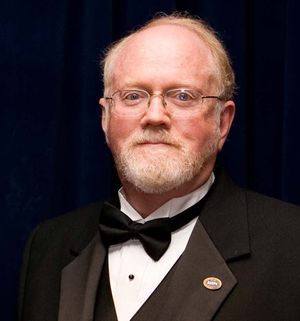Mark Edward Davis
Biography
Both a technical innovator and manager of some of the most advanced radar systems ever conceived, developed, and deployed, Mark E. Davis has established a sustained history of outstanding and pioneering contributions to radar systems, radar phenomenology, and radar signal processing. Among his many accomplishments, Davis led the team that developed a new generation of airborne microwave radars known as modular survivable radar (MSR), utilizing emerging technologies of monolithic microwave integrated circuits (MMIC) and very-large-scale integrated circuits (VLSI). A breakthrough in radar surveillance technology, MSR provided novel, multimode features that were vastly superior to competitive systems, such as achieving an order of magnitude improvement in mission reliability; performing multimode, simultaneous detection; and tracking of ground targets by employing ten independent sum and difference beams. It also enabled real-time synthetic aperture radar (SAR) and ground moving target indication (GMTI) radar mode operation. Responsible for the U.S. Air Force Science and Technology Plan for Space Based Radar (SBR) development, Davis transformed the SBR community from a collection of scientists into a team of specialists who develop state-of-the-art technology for the United States and its allies. He was also instrumental to the U.S. Defense Advanced Research Projects Agency (DARPA) Mountain Top Radar Program, which involved the collection of measured data for validating radar space-time adaptive processing (STAP) techniques. He was responsible for the end-to-end process of algorithm validation, measured data characterization, and processing using high-performance computing. His contributions to industry include the development of critical electronic components and signal processing technologies that were ahead of their time, leading to highly sophisticated, advanced, multifunction radar technology for improved GMTI and real-time SAR capabilities. Davis’ more recent activities include pioneering work on advancing foliage penetration (FOPEN) radar systems for improved detection and characterization of objects hidden by dense foliage. Based on his FOPEN system development and test expertise, Davis authored the textbook Foliage Penetration Radar: Detection and Characterisation of Objects Under Trees (2011) on FOPEN radar and has been the IEEE Aerospace Electronics Systems Society’s distinguished lecturer on foliage penetration and ultra-wideband radar since 2012.
An IEEE Life Fellow and recipient of the 2011 Warren D. White Award for Excellence in Radar Engineering, Davis is an international consultant through medavis consulting, Prospect, NY, USA.
